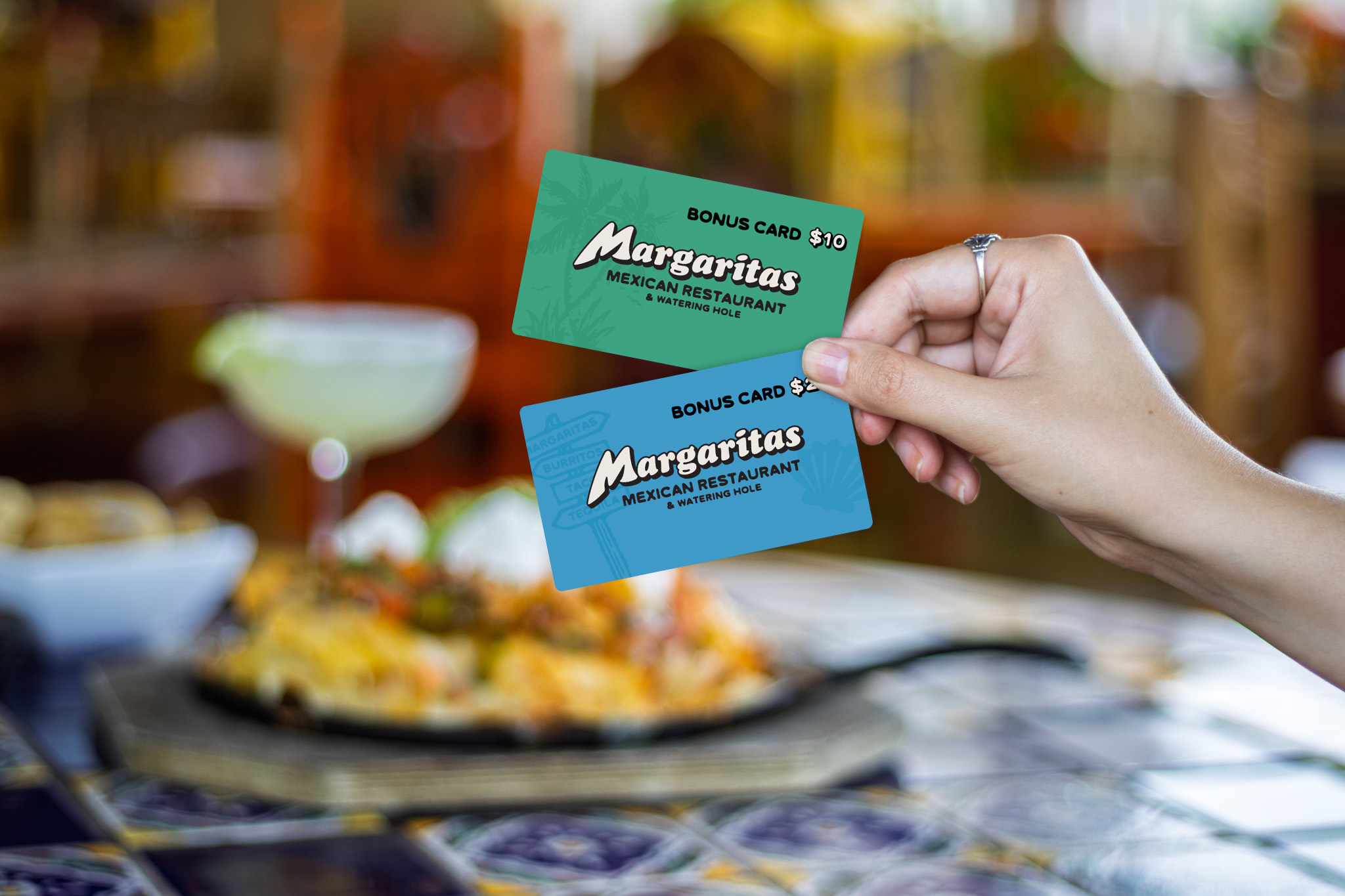-

Holiday Gift Cards
Buy a Margaritas gift card and get a bonus card!
-

Winter Specials
Come by and try our winter menu specials!
-

Weekday Getaways
Enjoy special offers Monday through Thursday!
-

Join us for Happy Hour
Enjoy specially priced bar bites in the bar and lounge weekdays from 3pm – 6pm!
-

Military Discount
We are proud to honor the men and women of our military who have served and continue to serve our country.
-

Margarita of the Month
Enjoy the flavors of the season with our Margarita of the Month!







